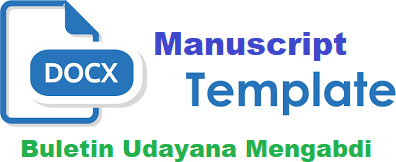OPTIMALISASI PERFORMA ATLET RENANG MELALUI PEMERIKSAAN DAN INTERVENSI FISIOTERAPI
Abstract
Swimming is a sport that requires good technique and physical ability to do it. Swimming involves all the physical components of strength, endurance, flexibility, and agility. These physical components can be improved by carrying out the right exercise program, but the right exercise program can only be obtained if an examination is carried out according to the procedure so that the provision of training can be tailored to the needs of each individual. This service aims to optimize athlete performance through appropriate physiotherapy examinations and interventions by paying attention to aspects of individual needs. The specific targets to be achieved from this activity are to check the strength of the core muscles, check the flexibility of the hamstring muscles, and provide physiotherapy interventions to swimming athletes at the Takahide Swimming Center. The method used to achieve this goal is to carry out service by coming directly to the Takahide Swimming Center. This service activity involves 3 members who are lecturers as well as physiotherapists. This service begins with a survey of the Takahide Swimming Center, followed by examinations and physiotherapy interventions. All members of the Takahide Swimming Center swimming group have a good value of hamstring muscle flexibility with an average value of 10 – 16cm for males, while the average value for women is 11 – 20 cm. While the value of core muscle strength in swimming members is in the average category, namely 14-30 times in 1 minute, but there are also those who have core muscle strength values in a good category, namely 31-40 times in 1 minute.
Keywords: strength, flexibility, intervention, athlete
Downloads
References
Cahyandaru, E. Y. (2015). Hubungan antara Kecepatan, Kelentukan dan Daya Tahan VO2 Max terhadap Prestasi Renang Gaya Bebas 50 Meter di Pusat Pembinaan Atlet Berbakat (PAB) Daerah Istimewa Yogyakarta. Universitas Negeri Yogyakarta.
Evenetus, Y. , M. R. B. & M. A. (2019). Pengaruh Program Latihan terhadap Peningkatan Kekuatan, Power, Daya Tahan Lengan dan Performa Renang 50 Meter Gaya Bebas. Doctoral Dissertation, 445–455.
Karpiński, J. et al. (2020). The Effect of a 6-Week Core Exercises on Swimming Performance of National Level Swimmers. PLoS ONE, 8, 1–12.
Mulyawati, C. , M. & I. D. A. (2018). Korelasi antara Panjang Lengan dan Tungkai dengan Kecepatan Renang Gaya Bebas 50 Meter (Studi pada Klub Renang Spectrum Semarang). Kedokteran Diponegoro, 7(2), 990–999.
Nimkar, N., Bera, T. K., Bagchi, A., & Narnolia, R. (2020). Abdominal Muscular Strength Endurance: Normative Reference Values for Children 11 to 15 Years of Age. Indian Journal of Public Health Research & Development, 11(2), 692.https://doi.org/10.37506/v11/i2/2020/ijphrd/194889
Pradana, V. O., Hermawan, I., & Marani, I. N. (2018). Model latihan core stability cabang olahraga renang gaya kupu-kupu untuk usia 9-10 tahun. Jurnal Keolahragaan, 6(1), 60–68. https://doi.org/10.21831/jk.v6i1.19951
Septianingtyas, E. F. , I. & W. R. (2018). Core Stability Training terhadap Keseimbangan Dinamis pada Pemain Futsal di Klub Pemuda Rotan dan UKM Futsal Stikes ’Aisyiyah Surakarta,. Repositori Universitas ’Aisyiyah Surakarta.
Sriundy, I. M. (2010). Konstruk dan Faktor Jasmani yang Berpengaruh terhadap Prestasi Renang Gaya Bebas 50 Meter. Jurnal Penelitian Dan Evaluasi Pendidikan, 14(2), 186–205.
Tong, T. K., Wu, S., & Nie, J. (2014). Sport-specific endurance plank test for evaluation of global core muscle function. Physical Therapy in Sport, 15(1), 58–63. https://doi.org/10.1016/j.ptsp.2013.03.003

This work is licensed under a Creative Commons Attribution-ShareAlike 4.0 International License.

This work is licensed under a Creative Commons Attribution-ShareAlike 4.0 International License.




.png)


1.png) GARUDA - GARBA RUJUKAN DIGITAL
GARUDA - GARBA RUJUKAN DIGITAL



